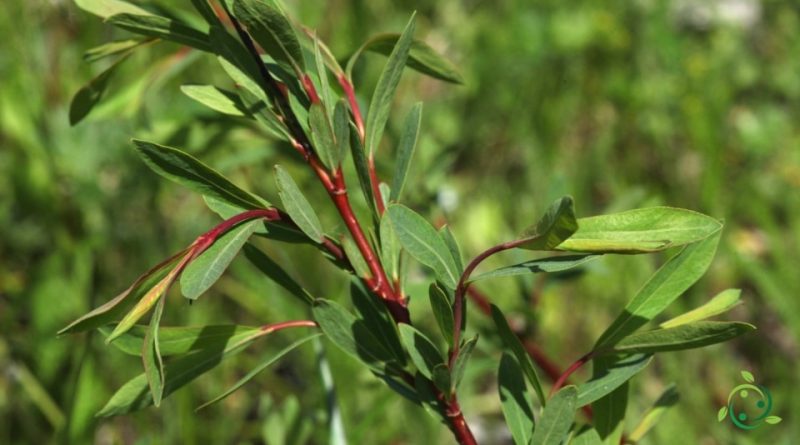Reproduction of the purple willow
Reproduction of the purple willow
The Purple Willow, purpleosier willow or purple osier, (Salix purpurea L., 1753) is a dioecious and deciduous tree plant of the Salicaceae family.
Suitable breeding habitat –
Salix purpurea is a Eurasian plant, distributed in almost all of Europe, North Africa and western Asia.
Its natural habitat is represented by humid woodland areas and by the banks of rivers, streams and streams where it grows on humid or waterlogged, sandy or silty soils, and with the frequent presence of pebbles; the altitude range where it grows varies from 0 to 600 meters.
Propagation –
Salix purpurea is a species of willow that requires certain environmental conditions for adequate reproduction. The following are the characteristics of a suitable habitat for Salix purpurea:
– Climate: thrives in temperate and cold climates. It is adapted to growing in areas with moderately hot summers and cold winters. However, it can tolerate warmer temperatures as well if there is adequate water supply.
– Sunlight: It needs a good amount of sunlight for photosynthesis. Therefore, the ideal habitat should offer exposure to sunlight for most of the day. Willows can tolerate some shade, but bright, direct sunlight promotes better growth and reproduction.
– Soil: prefers moist soils, rich in organic matter and well drained. It adapts well to clayey, loamy or sandy soils, as long as the humidity is sufficient. However, avoid excessively dry or saline soils.
– Humidity: Being a hygrophilous plant, Salix purpurea requires an adequate availability of water for growth and reproduction. It is often found along rivers, lakes, marshes or other wetlands. Therefore, the ideal habitat should offer a good amount of available water, either through natural irrigation or through surface aquifers.
Propagation can be by seed or cuttings.
Reproduction by seed:
– You have to collect the mature seeds of the plant. The seeds are usually contained in small capsules that form after the flowers wither.
– After collecting the seeds, they should be placed in a vase or container filled with moist soil.
– At this point it is necessary to lightly cover the seeds with a thin layer of soil by spraying water to keep the soil moist.
– The vase should be placed in a bright area avoiding direct sunlight.
– Keep the soil consistently moist and the seeds should start to germinate within a few weeks. Keep in mind that willow seed germination can take some time.
Reproduction by cuttings:
– Cut a cutting of about 10-15 cm in length from the mother plant. Make sure you take a young cutting that is flexible and has healthy leaves.
– Remove the leaves from the lower part of the cutting, leaving only 1 or 2 pairs at the top.
– Fill a pot or container with a well-drained substrate, such as a mixture of peat moss and perlite.
– Make a hole in the ground with a stick and plant the cutting in the ground, making sure it is stable.
– Water the cutting well and cover it with a transparent plastic bag to create a humid environment.
– Place the cutting in a bright area, but avoid direct sunlight.
– Check the cutting regularly to make sure the soil stays moist, but not soggy.
– After a few weeks, the cutting should start rooting. You can check this by gently tugging on the cutting. If you meet resistance, it means it has taken root.
After the new plants are well rooted, they can be transplanted into larger pots or a permanent spot in the ground.
Ecology –
Salix purpurea is a plant that grows in both temperate and cold zones and in moist and well-drained soils.
This plant native to Europe and western Asia, has also naturalized in other parts of the world. The ecology of Salix purpurea is influenced by its habitat, its life cycle and its interaction with other species.
Salix purpurea is typically found in moist habitats, such as river banks, streams, wetlands, and areas with well-drained soils. It can also grow in areas with drier soils, although it prefers humidity. This species is hardy and can adapt to a variety of conditions, from sandy to clayey soils.
It is a fast growing shrub or small tree. It has lanceolate and light green deciduous leaves, which turn yellow in autumn before falling. In spring it produces catkin-shaped inflorescences, which contain small hairy reddish flowers. These flowers are pollinated by the wind and give rise to small capsules containing numerous seeds which are dispersed by the wind.
Salix purpurea plays an important role in aquatic and riparian ecosystems, providing habitat and food for various species. Its extensive roots help stabilize soils and prevent erosion on the banks of water bodies. Additionally, dead leaves and stems decompose quickly, adding organic matter to the soil and enriching the nutrient cycle.
This willow is also an important food source for various species, including deer, rabbits, and various bird species. Its flexible branches and young leaves are used as building material by beavers, while the thicker branches can provide shelter and nesting areas for various waterfowl.
In summary, the ecology of Salix purpurea is closely linked to its wetland habitat, its perennial life cycle and its interaction with other species. This species of willow plays an important role in stabilizing the soil, enriching nutrients, providing habitat and food for various species, thus contributing to the functioning of the ecosystems in which it is found.

